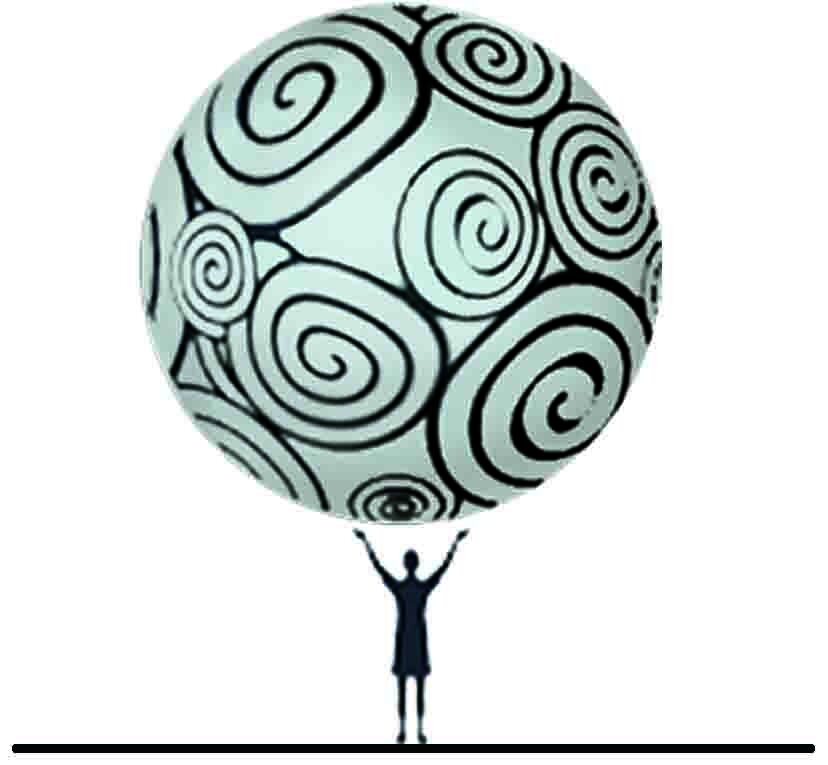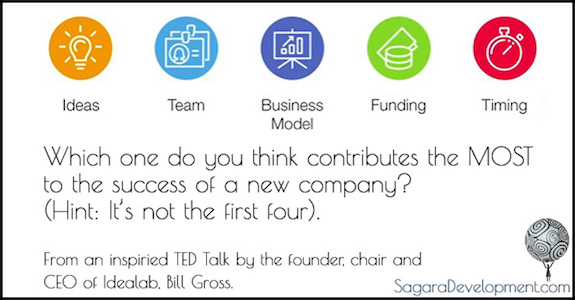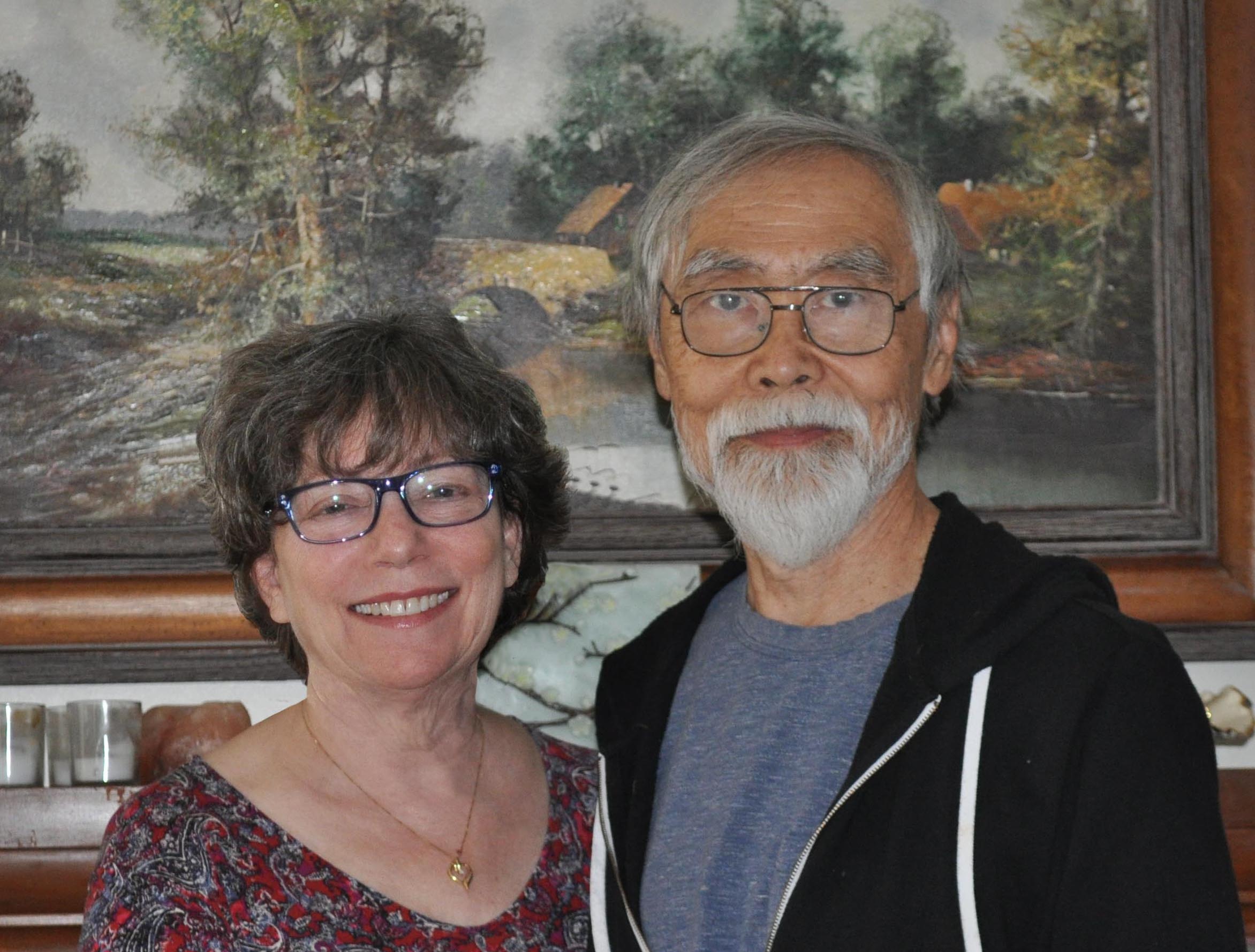We are ALL startups (new businesses) when we begin and often as we go along and grow and change, no matter the size of our businesses. The reality is that most new businesses fail. Fortunately for us, this guy studied why new businesses don’t fail.
I like it. I'm a firm believe that you get what you focus on, so, it's best to study reasons for success and not failure.
So, what does make for a successful startup? The image above shows five areas that contribute to success. They all matter, but the biggest factor was timing. Not money, not ideas, not the team, and not the business model.
Bill Gross is the founder, chair and CEO of Idealab, an incubator of new inventions, ideas and businesses. A long time entrepreneur (since high school), he has started (and sold) multiple companies. He got curious about the companies he now works with, a dug into the stats to see what matters most for success. It's not what you think, not money, not even a business plan. It's something that applies to us all no matter how small our businesses.
Watch this TED Talk, it's really good.






